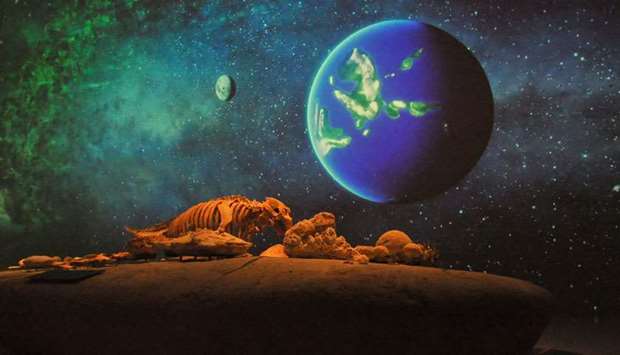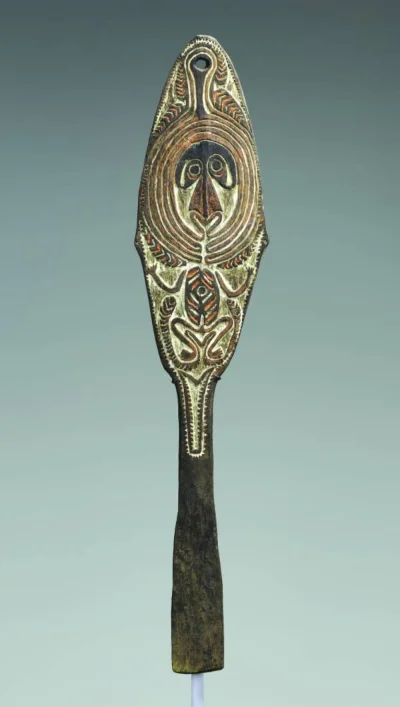Sheikha Amna bint Abdulaziz bin Jassim al-Thani, Director, National Museum of Qatar describes the journey, from the conceptualisation to the inauguration
A visit to the National Museum of Qatar is an all-encompassing journey, carrying you from millions of years ago to the edge of tomorrow.
The journey sweeps you across the inland desert, and plunges you into the depths of the sea.
It embeds you among nomadic poets and artisans, and ushers you into today’s gleaming towers and bustling refineries.
Music, storytelling, commissioned artworks, ancient artifacts, rare and precious objects, and dazzling, monumental films are all part of the experience, which combines wide-ranging scholarship with the authentic faces and voices of the people of Qatar—the true source and inspiration for this museum.
Just as the museum itself is a journey, so too was the process that led to its creation.
Qatar Museums and the National Museum team felt strongly that we wanted to create a living experience for our people—a museum with a heart.
That meant, first of all, that our galleries should be full of movement, sound, colour, and a sense of discovery.
We believed we had the potential to go beyond even the most exciting existing museum displays and develop something truly immersive.
And we believed the substance of those experiences ought to come from the Qatari people themselves.
So we began a decade of planning and organizing.
To develop our ideas about the form that our exhibitions might take, we visited institutions throughout the world, surveying the most advanced, engaging displays of history, natural history, and art.
To develop the content of NMoQ, we began to organize meetings with the public, inviting Qataris to share whatever stories and materials they might care to offer.
We asked them to tell us what they most wanted to see and hear in NMoQ.
We held more than a dozen of these meetings, which were attended by more than 400 people.
Out of them came a richness of information—of life—that became the essence of NMoQ.
Our next step was to distill this essence into themes that would run through the museum.
We imagined the special combination of space, sights, sounds, and materials that would carry our visitors along—including the artworks and films we could commission to help tell our story.
At the same time, we were gathering scholarly insights and information from our local and international network of subject specialists.
The depth of knowledge from these partners helped us shape the adventure in museum-going that was beginning to emerge.
To test our ideas, one of our earliest initiatives was to organize a pilot project, telling the story of the historic Palace of Sheikh Abdullah: the former home of the ruler and seat of government, and the original site of the National Museum.
To discover how our themes and methods would resonate with people, we presented a three-month-long exhibition about the Palace.
When 11,000 people came to visit and told us how much it meant to them, we knew we were on the right path.
Working hand-in-hand with our outstanding design team, we continued to give the new NMoQ its astonishing reality.
Every element of the museum that took shape, inside and out, became a reflection of the lives and aspirations of the Qatari people.
The magnificent architectural design by Jean Nouvel, which like the desert rose seems to grow out of the landscape, enfolds the beloved, renovated Palace of Sheikh Abdullah bin Jassim as the very core of the new Museum.
Commissioned artworks by local and international artists—Ali Hassan, Aisha Nasser Al-Sowaidi, Roch Vandromme, Jean-Michel Othoniel, and more—add a variety of highly personal visions to our themes.
The result is a museum that tells a story in three overarching chapters—Beginnings, Life in Qatar, and The Modern History of Qatar—divided into eleven sections.
Each section is a distinctive, 360-degree environment, which brings you into the heart of its theme.
You encounter the natural habitat and wildlife of Qatar through a kaleidoscopic visual experience by filmmakers Christophe Cheysson and Jacques Perrin.
You meet the people of Qatar and begin to learn about their traditional way of life through filmed oral histories, selected from more than 500 that we recorded, and authentic artifacts salvaged from a ship that sank a thousand years ago.
The gallery about life in the desert centers on a complete bait al-sha’r, or nomads’ tent, accompanied by a breath-taking film by the great director Abderrahmane Sissako, starring the actual family to whom the tent belonged.
The presentation about contemporary life and today’s liquid natural gas production includes a grand-scale model of Doha itself, a multi-user interactive wall for calling up information and images, and a 30-screen video installation by John Sanborn.
With all this, and more, the museum we have created is not a showcase for a collection.
It is a journey—and like any true journey, it does not merely take people from one place to another.
It changes the travellers themselves and helps redefine them.
I hope that everyone who joins in the journey of the National Museum of Qatar will be moved by the experience.
I hope they will come out with a deeper understanding of life in this ancient and modern land, and a greater sense of wonder at all it offers the world.



